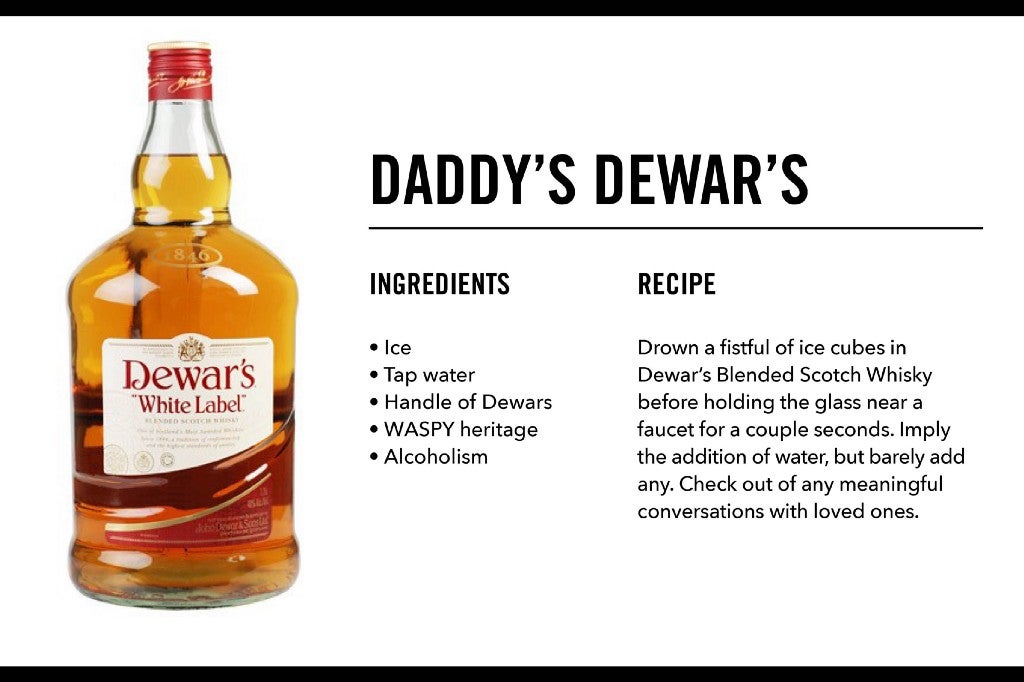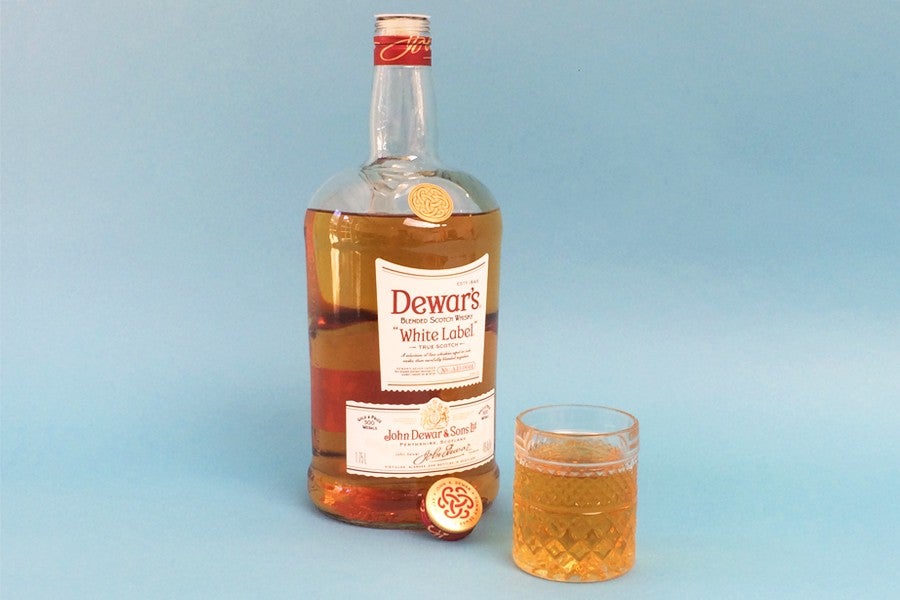
When I was 15 years old, one of the first things my Connecticut boarding school friends and I did after getting fake IDs was throw an “adult” cocktail party. As adolescents we were suddenly poised to experience these banal functions for ourselves — through a haze of brown liquor and tweed, which we paradoxically associated with unceasing fun and grownup debauchery.
The theme was, unironically, “Like Our Fathers!” — the thought being that, as junior prepsters growing up in Fairfield County, Connecticut in the 1980s, we’d suffered through enough cocktail parties as kids that we could host one in our sleep. The most memorable of these functions occurred around the holidays. Tanks of liquor were dressed in festive Christmas sweaters; guests ate boozy chocolates strewn about the wet bar, and everyone spilled out the back door by 11:45 p.m., cocktails in hand. The night ended with a convoy of drunk drivers motoring to Midnight Mass.
We followed a strict dress code: jacket and tie, of course (like our fathers!). And we were each tasked with procuring a bottle of our dad’s favorite booze, using our newfound fraudulent driver’s licenses from the state of New Hampshire. We signed out off campus for the weekend and hopped the Metro North train to Westchester, New York, where our host’s parents vacated his 19th century Victorian mansion for the evening, allowing us to wholly embrace this quasi-cultured function. One kid showed up with a baby-blue bottle of Bombay Sapphire, olives and a set of his father’s corncob pipes. Another gleefully unpacked Old Fashioned fixings (bourbon, bitters, cherries, orange peels, etc.) complete with a mortar and pestle for requisite muddling.
I brought a handle of Dewar’s.
The amber tank of blended Scotch whisky was a mainstay on my kitchen counter growing up — bookended by the microwave and the fish tank — removed only when being replaced, bi-weekly. My father drank it on the rocks with water, though proportions of the latter decreased over time and eventually faded away entirely. His generous pour involved turning the bottle vertically 180 degrees for maximum flow. He drank it every night, without fail — but only at night. (With the occasional daytime can of Budweiser, more frequent on the weekends.) A Yankee game was typically on in the background; the frequency of refills increased if the Yanks were winning, accompanied by impersonations of play-by-play man Phil Rizzuto. “Holy cow! Wouldya look at that!?” [Glug glug glug.] In hindsight, his rabid consumption of Dewar’s was almost entirely responsible for my parents’ divorce in 1991 (the year I applied to boarding school) and why to this day I’ve never had a meaningful conversation with my father after 8 p.m.
And yet, like any son of an alcoholic, I was captivated by his vice. This isn’t surprising: Genetics are about half the reason why a person develops alcoholism, with chances increased by certain environmental factors including advertising, availability and social acceptance—like, you know, throwing a cocktail party at age 15.
So there we were, needlessly formal and basking in pseudo-sophistication, clutching corncob pipes in one hand and Dad’s booze of choice in the other. Gin and tonics were most common, followed by varying forms of martinis, red wines and IPAs. We clumsily prepared our respective cocktails, some better than others. My recipe, of course, was simple: drowned a fistful of ice cubes in Dewar’s before holding the glass near a faucet for a couple seconds, implying the addition of water. We toasted the room and our fathers before drawing a healthy tug on our respective cocktails.
Next for me was a reflexive, audible gag. Though I had moderate experience with other forms of alcohol and was intimately familiar with the look of Dewar’s blended Scotch whisky on the rocks with a hint of tap water, I hadn’t the faintest idea what it actually tasted like.
Poison, it turns out.
I managed to choke down this and four more glasses — though the latter three were Dewar’s and Sprite (like the Scots take it!) — before projectile vomiting into the pachysandra outside my friend’s house. Hangovers the next morning were thorough and frightening, making us all resemble needy children once again.
By the time I picked up Dewar’s again in my mid-20s, my father had downshifted to magnums of cheap Chardonnay, having bargained away Dewars in an effort to evade complete sobriety following the first of many interventions. Coincidentally, I had become a full-blown addict for whom — wouldn’t you know it? — Dewar’s tasted fucking amazing. “It’s just so easy to drink,” I’d evangelize to friends, adding that unlike single malts, blended Scotch could be guzzled — and guzzle I did.
Until I didn’t. In the fall of 2012, my collective vices joined forces to result in 150 mini strokes, which left me deaf in one ear and very nearly killed me.
For many years, I was grateful for having learned how to drink like a man (or at least like my father). I took pride in knowing my way around a well-stocked wet bar (find the Angostura bitters) and my way out of a mid-day hangover (find the steam room). Until I realized I had learned to drink exactly like my father. And then much more than my father (find the amphetamines and cocaine).
I recently attended a 12-step meeting with my little sister, who is lucky to have found sobriety in her early 20s. Though I’ve never spoken with my dad about Dewars — or any aspect of our respective addictions, for that matter — he’s always supportive of my efforts to dry out, even if they haven’t yet inspired him to do the same.


